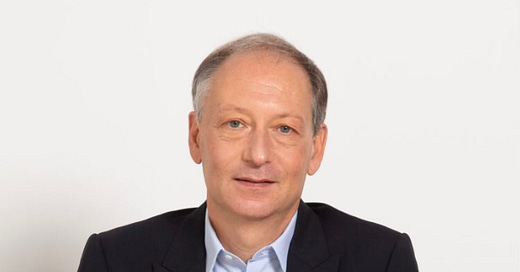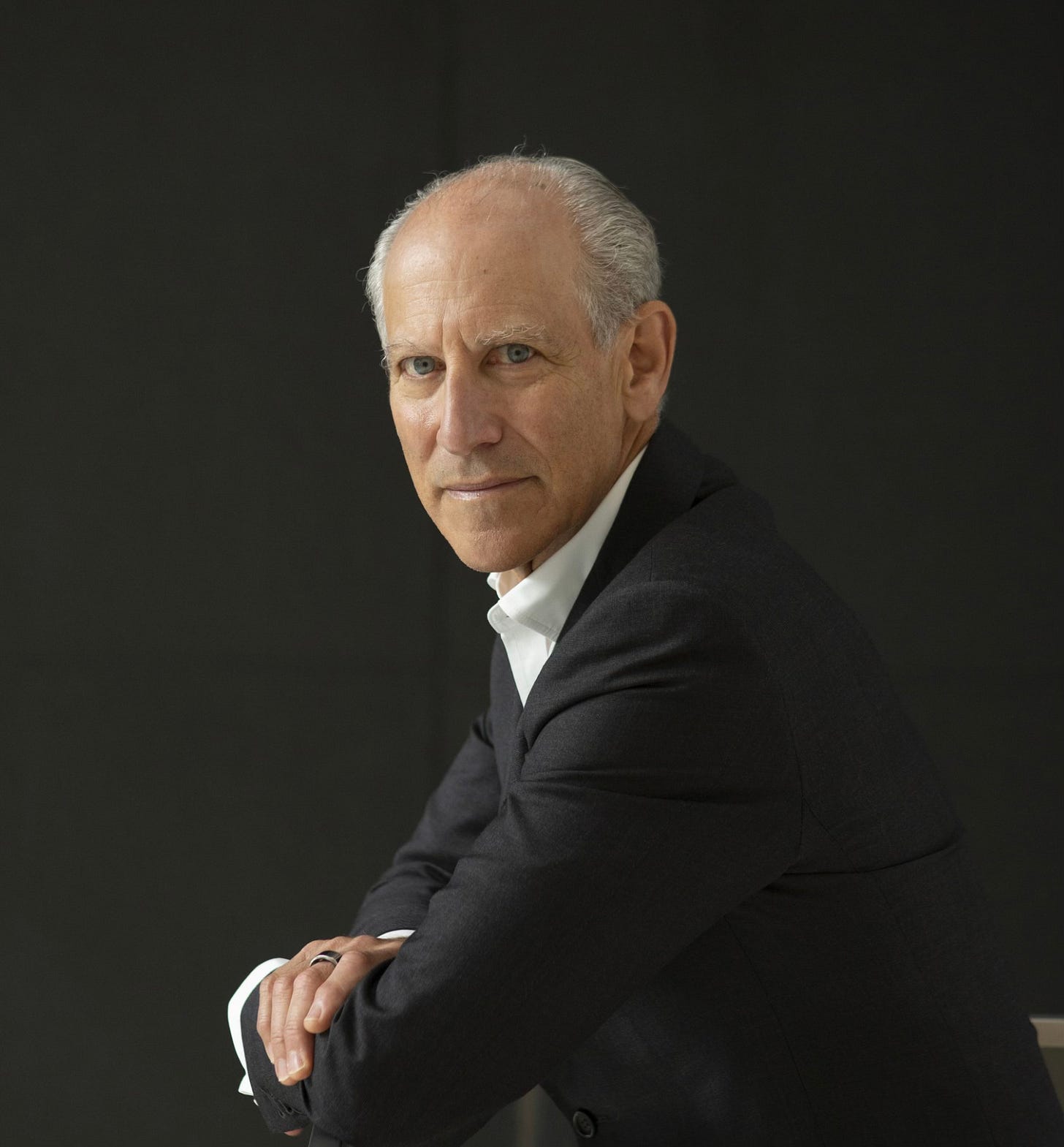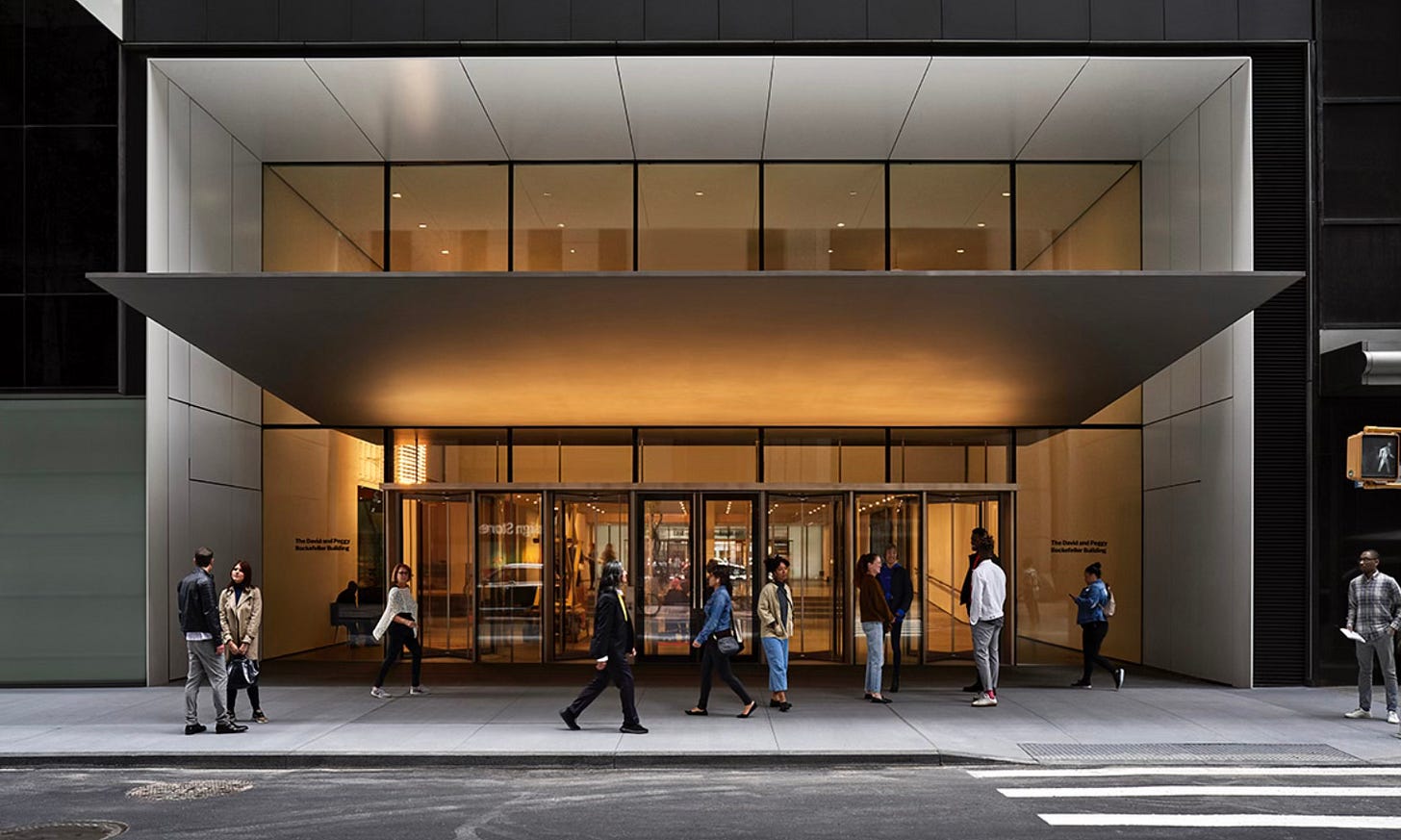Glenn Lowry's New Successor Calls Into Question What MoMA's Future May Be
The appointment of Christophe Cherix marks a significant break from museum directors of the past and leads me to ask, where is MoMA headed post-Glenn Lowry?
On Friday, news broke that the Museum of Modern Art (MoMA) had found a replacement for its longtime director, Glenn Lowry. The search for Lowry's successor, which lasted almost eight months, resulted in an internal hire. The person named to replace Lowry was Christophe Cherix. Cherix, who was appointed as The Robert Lehman Foundation Chief Curator of Drawings and Prints at MoMA in 2013, has worked at the museum since 2007.
The choice to replace Lowry.
In September, Lowry announced he would be leaving MoMA after 30 years as its director. When I first learned of his successor, I was shocked. This choice has raised serious reservations for me regarding the museum’s board of directors and administration, as well as the broader message this sends to other art and cultural institutions in the U.S. and globally. MoMA remains one of the top art museums in the world. However, with this new appointment, I find myself questioning the motivations behind the decision and what other choices their governing body may make in the future that could negatively impact the institution.
While I understand the complexities involved in replacing a powerhouse like Lowry, opting for an internal candidate seems like the easier route. Internal hires, after all, already understand the institution. Additionally, this appointment could serve as a temporary placeholder for a larger search in the future. But after an almost eight-month-long search, is this really the best they could do?
Additionally, this choice marks a vast departure from the traditional expectations of a museum director’s résumé and educational background over the past 50 years. What has seemed to become an industry standard does not appear to apply to Mr. Cherix. Another white European male leading a major museum is neither new nor particularly dynamic. And to have someone now set to take over for Lowery who frankly does not function on the same level feels like the height of mediocrity and a weaponization of the role.
The more significant issue is Cherix himself. A Swiss national, he does not hold an advanced degree—his highest credential is a licence from the University of Geneva. While he specializes in 1960s and 1970s art and has worked at MoMA for 18 years, his focus has primarily been on prints. His appointment was announced via a press release stating that the board of directors had “unanimously” approved the decision.
The only MoMA director I have ever known.
Traditionally, museum director positions—especially at well-known institutions—require a strong educational background in fields such as art history, museum studies, or related disciplines. This has been the standard for decades, and MoMA’s new appointment sends a complicated message to the art world. Additionally, curatorial roles often require an advanced degree.
According to the U.S. Bureau of Labor Statistics in 2023, employment for archivists, curators, and museum workers was projected to grow by 11%. While it's difficult to pinpoint an exact percentage, a significant portion of museum leadership positions, particularly those involving research and curation, require at least a master’s degree, with many preferring a PhD.
While higher education is not the sole qualification for leadership roles in museums, experience is also a key factor. However, in an industry that has historically pressured cultural workers to pursue advanced degrees for career advancement, Cherix’s appointment underscores a broader trend of unexceptional white men failing upward.
Where Cherix falls short to take on this, Lowry made it his own while also conducting scholarship at the same time. Born in 1954, Lowry earned his bachelor's degree from Williams College before completing his Ph.D. in art history at Harvard University. Lowry became MoMA’s director in 1995 and held the position for nearly three decades, making him the longest-serving leader in the museum’s history.
Under his tenure, he oversaw two major expansions of the museum, including the ambitious $450 million renovation and reopening in 2004 and the 2019 expansion, which significantly increased gallery space. He played a crucial role in redefining MoMA’s collection strategy, broadening its scope to include a more diverse and global range of artists. He also saw the museum through a historic 3-month strike in 2000.
Beyond architecture and acquisitions, Lowry helped MoMA navigate the challenges of the COVID-19 pandemic, overseeing financial and operational shifts to sustain the institution. His tenure also saw a significant rise in MoMA’s attendance, though recent years saw fluctuations due to the pandemic’s impact. As a public intellectual, he championed forward-thinking exhibitions and programming, helping MoMA remain one of the most influential art museums in the world.
MoMA from its front entrance where Cherix will now have the keys to the modern art castle.
Odds are that the board of directors believes Cherix will maintain continuity in the wake of Lowry’s departure. They likely see him as someone who will follow directives and avoid making waves. But sometimes making bold decisions, particular when it comes to programming and other museum related issues, is exactly what’s needed. This also feels like another classic example of privilege when mediocre white men manage to simply fail up.
Even when Nancy Spector left the Guggenheim under a cloud of controversy following allegations of racism and other workplace issues in 2021—allegations from which she was cleared in an independent report—the museum made the choice of appointing Naomi Beckwith. Beckwith, who holds a graduate degree with distinction from the Courtauld Institute of Art in London, was an obvious and well-qualified person for the job.
Although his years of curatorial work within MoMA will help in this new role, Cherix feels like an uninspired choice. Replacing Lowry—who became a public intellectual and front-facing figure for the museum, helping to invigorate new audiences through exhibitions such as the recent Joan Jonas and Jack Whitten shows—is no small task. Frankly, there aren’t many figures like Lowry in the museum world today and in the art industry at large.
However, there were more qualified internal candidates than Cherix. Sarah Suzuki, for example, seems like a natural choice to replace Lowry. Suzuki has been at MoMA for over 25 years and currently serves as an associate director, acting as the liaison between senior administration and the museum’s six curatorial departments while leading the Curatorial Affairs Division. She holds degrees from Dartmouth and Columbia and began her career at MoMA in 1998 as a research assistant. As deputy director for curatorial affairs, she is effectively second-in-command to Lowry.
When selecting a candidate for a role such as this., financial considerations may also come into play for an institution. According to ProPublica’s publicly available tax filings, Cherix is currently the 13th highest-paid individual at MoMA, earning $406,901 annually. Stuart Comer, another potential candidate, earns $330,410. Despite being another white male, Comer’s background in media and performance could have made for a more dynamic and forward-thinking choice. If cost-cutting was a concern, one might wonder whether Comer’s lower salary made him a viable alternative. Suzuki is currently the 7th highest paid individual. However, with Cherix stepping into his new role, odds are he will make Lowery’s current salary which is over $1.5 million, which frankly, he doesn’t deserve.
The reality is that museums are operating at financial deficits following the COVID-19 pandemic, with overall attendance down, jobs cut due to budget constraints, and other economic challenges. In 2022, MoMA attracted 2,190,440 visitors, making it the fourth most-visited museum in the United States and the third most-visited U.S. art museum. This attendance was 89% higher than in 2021 but still below the pre-COVID attendance in 2019.
MoMA, the second-oldest modern art museum in the U.S., now faces an uncertain future under this new leadership. In an increasingly divisive political climate, museums must navigate new pressures—both financial and cultural. And with the appointment of Cherix who knows what new path he will chart.






